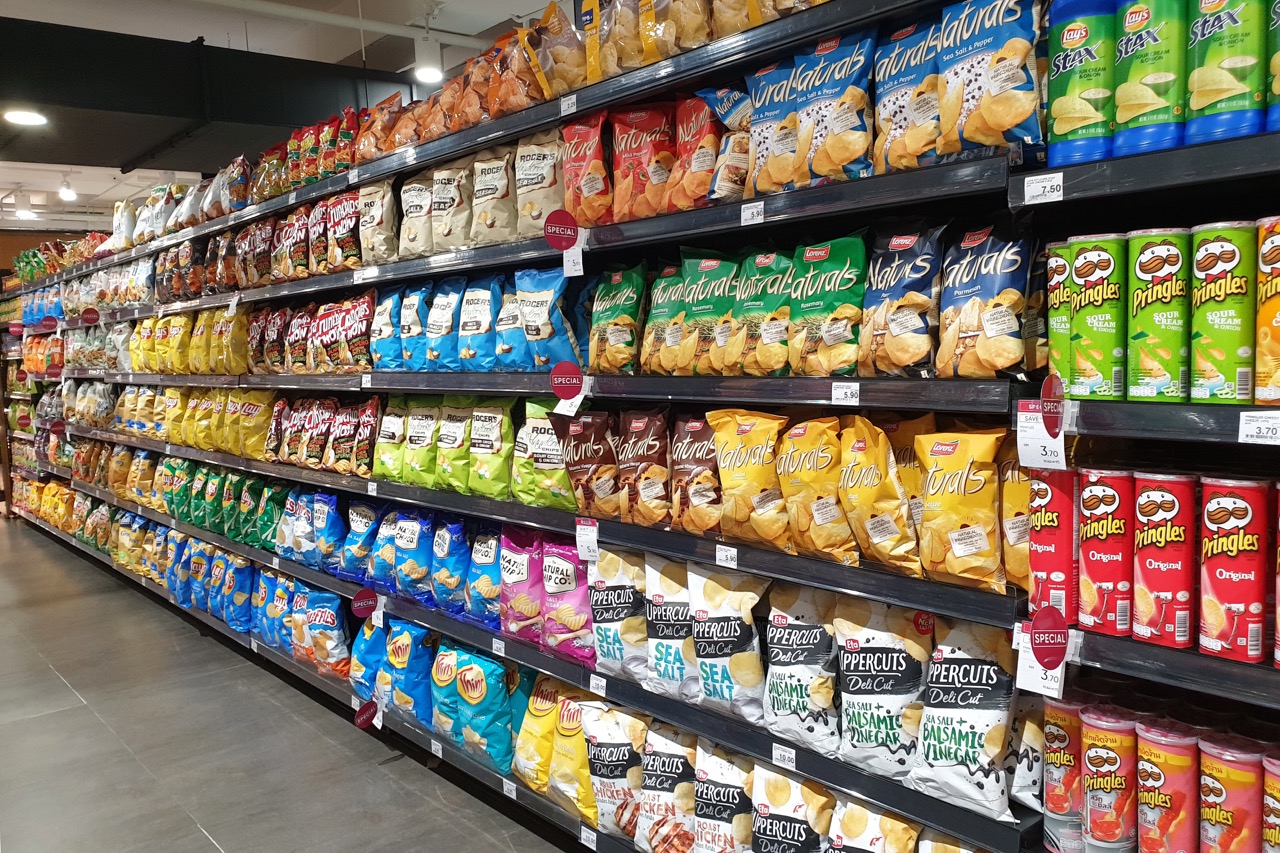Food Addiction and Chronic Disease
Not every addiction begins with pleasure. Some start with pain, isolation, or the quiet need for something to feel different. When comfort is scarce and life feels unsteady, people often turn to food, especially options high in sugar or salt. Food addiction is understood as an uncontrollable craving for highly processed and palatable foods. These foods feel familiar and offer a brief sense of relief, even when they may cause harm over time, including in the form of chronic illnesses.

Eating as a Way to Cope
Food addiction is often misunderstood. Many assume it stems from a lack of willpower or poor habits, but for some people, the connection with food runs much deeper. Emotional pain, long-term stress, illness, or the need for safety can all shape how someone eats. In these moments, eating may feel less like a choice and more like a way to get through.
For many, food becomes a source of relief during stress. It can quiet the mind, distract from discomfort, or offer a moment of calm when little else feels manageable. What begins as comfort can slowly turn into a repeated response [1]. Physical hunger fades into the background while emotional relief becomes the focus.
This shift often happens in silence. People may eat alone, feel guilt afterward, and quietly promise to stop. Even when health effects appear, the urge to eat stays strong. Food moves from something that nourishes to something that numbs.
The patterns behind food addiction are rarely simple. Chronic illness, limited access to nourishing dietary options, and ongoing emotional pain all play a part [2]. Attempts to change can lead to frustration, not because of weakness, but because the feelings underneath have not been addressed.
What is Food Addiction?
Food addiction is the repeated, often uncontrollable consumption of processed foods, especially those high in sugar, salt, or fat. These foods are intentionally designed to be intensely rewarding. They activate the brain’s reward system in ways that heighten cravings and make eating in moderation more difficult.
Eating behavior is not just about quantity. People often lose control and continue eating despite clear signs of harm, such as weight gain, poor blood sugar control, or ongoing fatigue. The urge is typically driven by the need to feel better emotionally. Food becomes a way to manage stress, soothe pain, or create a sense of calm when other options feel out of reach.
Processed and highly palatable foods often trigger a cycle of craving, relief, and regret [3]. Many common snacks, fast foods, and sugary drinks are highly palatable and easy to access. Over time, the brain begins to rely on these foods not for nourishment, but for emotional stability.
Unlike other forms of addiction, food is a necessary part of daily life and cannot be avoided, so this makes recovery more complex. The widespread availability and affordability of processed foods also complicates it. Addressing food addiction requires strategies that support both emotional well-being and physical health, especially in environments where processed foods are the most accessible options.
The Cost of Processed Food
In many communities, the most affordable and widely available foods are also the most processed. Packaged snacks, frozen meals, and sugary drinks are often easier to find than fresh fruits, vegetables, or whole grains. This is especially true in areas with few full-service grocery stores.
People living with limited income, long work hours, or limited access to convenient foods often turn to these foods out of necessity. They are inexpensive, filling, and require little time or preparation. Marketing and pricing make them even more appealing, particularly during periods of stress or financial strain.
Factors beyond location influence access to processed food. Income, transportation, housing, and daily pressure all influence what people can afford and how they eat [4]. For many, processed foods are not simply a preference but one of the few consistent options available. However, relying on processed foods can have more than short-term dietary consequences, as it also raises the risk of developing chronic health conditions over time.
Processed Foods and Chronic Illness
Highly processed foods are a major contributor to the development of chronic disease. Diets high in added sugars, refined carbohydrates, and industrial fats have been linked to conditions such as type 2 diabetes, heart disease, and non-alcoholic fatty liver disease [5]. These foods can disrupt blood sugar regulation, promote inflammation, and strain the body’s systems.
Both the composition of these foods and their effects on the body play a role in their impact. Many processed products are engineered to encourage repeated use. Their flavor, texture, and convenience often override the body’s natural signals of hunger and fullness. Regular consumption may impair insulin response, disrupt hormonal balance, and contribute to weight gain and chronic inflammation.
A large-scale study published in The BMJ in 2019 found a significant association between higher intake of ultra-processed foods and increased risk of heart disease [5]. Researchers tracked over 100,000 adults and reported that for every 10% increase in processed food consumption, there was a corresponding rise in cardiovascular illness. This evidence reinforces the link between industrial food products and long-term health outcomes.
Chronic conditions commonly linked to processed food intake include:
- Type 2 diabetes
- Cardiovascular disease
- Non-alcoholic fatty liver disease (NAFLD)
- Obesity
- Chronic systemic inflammation
These diseases point to deeper issues within the food system. Many people depend on processed foods because they are affordable, convenient, and widely marketed. Addressing this connection means confronting the conditions that contribute to illness and working toward solutions that improve both healthcare and access to nutritious food.
How Clinical Eating Disorders Are Different
Food addiction and eating disorders can appear to be similar, but they often have different causes and require different types of care. Conditions such as anorexia, bulimia, and binge eating disorder are medical diagnoses. These behavioral health disorders are usually linked to concerns about weight, body image, or a need for control.
Food addiction is usually not about appearance. It involves repeated and often compulsive eating of certain types of food, especially those high in sugar, salt, or fat. The goal is usually emotional relief, not weight change.
Some people live with both conditions at the same time. Others may relate to one experience but not meet the criteria for diagnosis. In either case, feelings of shame, guilt, or secrecy are common. It’s important to note that these patterns are not signs of failure: they are signals of distress.
The Emotions Behind Food Addiction
Many people use food to cope with emotional pain. Stress, grief, loneliness, or unresolved trauma can lead to eating for comfort, especially when other ways of coping feel out of reach or unsafe. Additionally, life events such as illness, job loss, or caregiving responsibilities can reinforce the behavior and make it more frequent.
When food is used to avoid or numb painful emotions, it becomes harder to identify what those feelings are or how to respond to them in other ways. Instead of asking only how to stop eating, it may be more helpful to explore what the craving is trying to soothe and what kind of support could offer genuine relief.
Therapy and Emotional Support
Therapy offers a space to explore the emotions behind food addiction. It enables people to understand better what drives their eating habits and to develop new strategies for responding to stress, discomfort, or emotional pain.
Cognitive behavioral therapy (CBT) can help shift unhelpful thought patterns and support changes in eating behavior. Trauma-focused therapies give people the tools to work through past experiences that may still influence their relationship with food [6]. Some approaches also include body-based techniques that help reconnect with signals of hunger and fullness, which may have been ignored or dulled over time.
Support groups can also play a valuable role in healing. Talking with others who share similar struggles can reduce feelings of shame and isolation. These conversations create a sense of connection and understanding that many people have gone without for years.
There are no quick fixes. However, with time, guidance, and consistent care, therapy can help build the self-awareness and emotional strength needed to move forward in a more balanced and supported way.
Treatment and Ongoing Care
Healing from food addiction takes time, structure, and compassion. Many people find the most support through a combination of therapy, peer groups, medical care, and daily practices that meet both emotional and physical needs.
Nutrition counseling can be beneficial, particularly when the provider understands the emotional side of eating. This approach focuses on building trust with food, rather than relying on restriction or strict rules. For those living with chronic health conditions, medical support may also be an important part of care.
Not everyone has access to in-person care, but community programs, virtual treatment options, and educational resources can provide support and guidance for those facing barriers.
Finding Peace with Food
Recovery is not about eating perfectly. It begins with awareness and a willingness to notice thoughts, behaviors, and emotions without judgment. Over time, reflection helps reconnect the body and mind as cravings become easier to understand and food no longer has to hold every feeling or unmet need.
Moving forward involves rebuilding trust in the self, acknowledging what has been carried, and allowing space for healing to take root. This process also means recognizing how emotional pain, chronic stress, and processed food access shape eating patterns. By addressing both emotional needs and systemic barriers, recovery becomes more compassionate, sustainable, and whole.
-
- Tomiyama, A. J., Dallman, M. F., & Epel, E. S. (2011). Comfort food is comforting to those most stressed: Evidence of the chronic stress response network in high-stress women. Psychoneuroendocrinology. https://doi.org/10.1016/j.psyneuen.2011.04.005.
- Ejiohuo, O., Onyeaka, H., Unegbu, K. C., Chikezie, O. G., Odeyemi, O. A., Lawal, A., & Odeyemi, O. A. (2024). Nourishing the mind: How food security influences mental wellbeing. Nutrients, 16(4), 501. https://doi.org/10.3390/nu16040501.
- Cummings, J. R., Schiestl, E. T., Tomiyama, A. J., Mamtora, T. M., & Gearhardt, A. N. (2021). Highly processed food intake and immediate and future emotions in everyday life. Appetite, 169, 105868. https://www.sciencedirect.com/science/article/abs/pii/S0195666321007753?via%3Dihub
- Katre, A., & Raddatz, B. (2023). Low-income families’ direct participation in food-systems innovation to promote healthy food behaviors. Nutrients, 15(5), 1271. https://doi.org/10.3390/nu15051271.
- Fang, Z., Rossato, S. L., Hang, D., Khandpur, N., Wang, K., Lo, C. H., et al. (2024). Association of ultra-processed food consumption with all-cause and cause-specific mortality: Population-based cohort study. BMJ, 385, e078476. https://doi.org/10.1136/bmj-2023-078476.
- Center for Substance Abuse Treatment. (2014). Trauma-informed care in behavioral health services. Treatment Improvement Protocol (TIP) Series, No. 57. Rockville, MD: Substance Abuse and Mental Health Services Administration. https://www.ncbi.nlm.nih.gov/books/NBK207191/.
The Clinical Affairs Team at MentalHealth.com is a dedicated group of medical professionals with diverse and extensive clinical experience. They actively contribute to the development of content, products, and services, and meticulously review all medical material before publication to ensure accuracy and alignment with current research and conversations in mental health. For more information, please visit the Editorial Policy.
MentalHealth.com is a health technology company guiding people towards self-understanding and connection. The platform provides reliable resources, accessible services, and nurturing communities. Its purpose is to educate, support, and empower people in their pursuit of well-being.
Patrick Nagle is an accomplished tech entrepreneur and venture investor. Drawing on his professional expertise and personal experience, he is dedicated to advancing MentalHealth.com.
Shivani Kharod, Ph.D. is a medical reviewer with over 10 years of experience in delivering scientifically accurate health content.
The Clinical Affairs Team at MentalHealth.com is a dedicated group of medical professionals with diverse and extensive clinical experience. They actively contribute to the development of content, products, and services, and meticulously review all medical material before publication to ensure accuracy and alignment with current research and conversations in mental health. For more information, please visit the Editorial Policy.
MentalHealth.com is a health technology company guiding people towards self-understanding and connection. The platform provides reliable resources, accessible services, and nurturing communities. Its purpose is to educate, support, and empower people in their pursuit of well-being.


